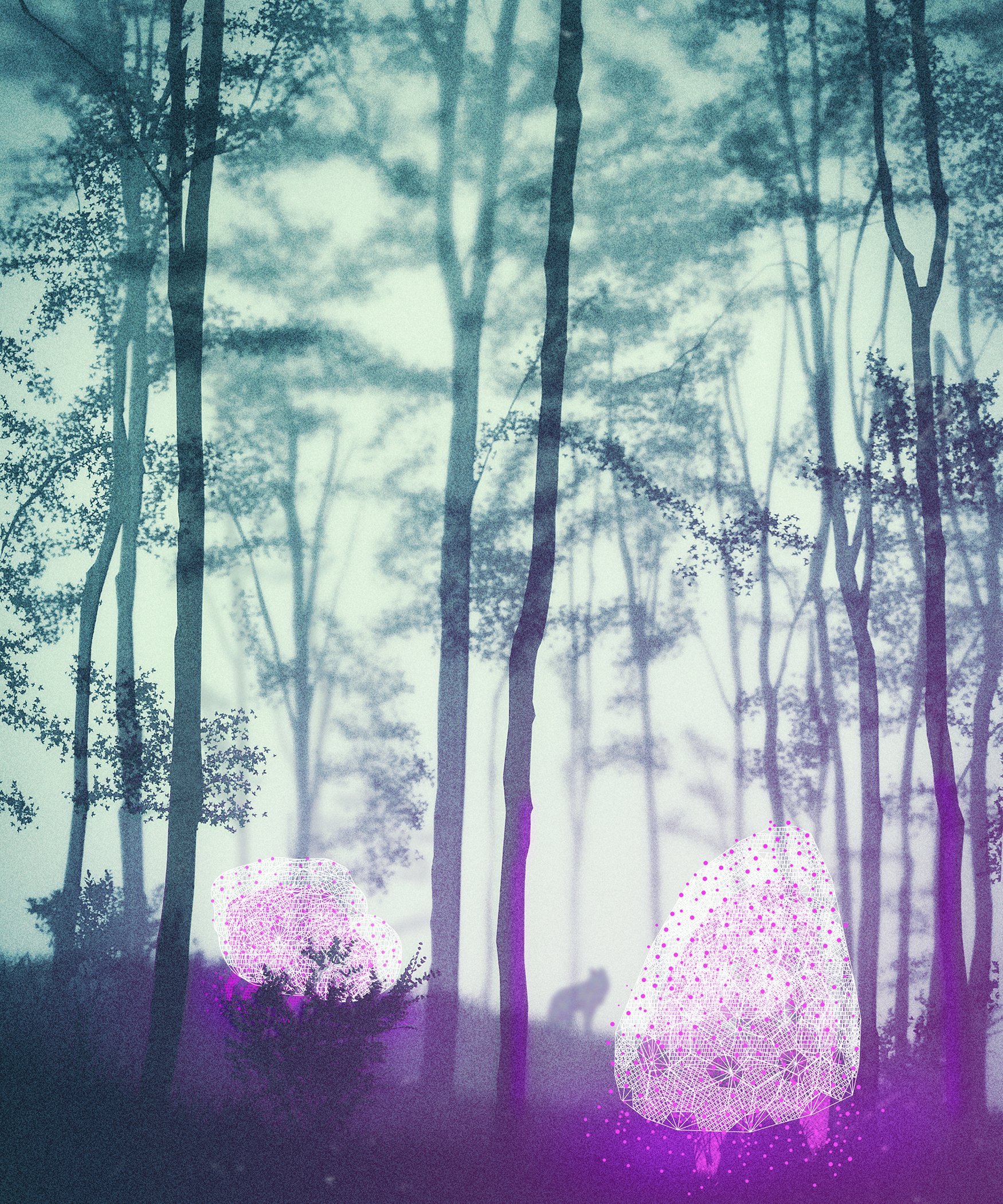
Post-Natural Selection․
In collaboration with AFAB Architecture
The Chernobyl Exclusion Zone (CEZ) has become an unexpected refuge for wildlife. This surprising fact is both an inspiring manifestation of the resilience of life, and a sad example of how nuclear radiation, despite its disastrous effects, is less of an obstacle to animals than humans. Specifically, we are focusing on weaver spiders of the “Araneidae” family. These creatures have been making erratic and less effective webs as a result of the challenging environment of the CEZ. Moreover, this family of spiders has a high adaptation capacity, which is why we have opted not to replace, but rather augment their web-making processes to improve their chances of survival.
We propose artificially constructing the general framework of their webs, after which the spiders themselves can focus on creating the most important part of the structure: the spiral made of sticky silk, which captures insects. Spiders expend a large amount of energy to create the framework, hence our proposal ensures that they can solely work on the production and weaving of the sticky silk, reacquiring their hunting capabilities over time with minimal human intervention.
We imagine that an aggregate of these webs creates a mobile architectural device, which can contain and transport a healthy cluster of spiders. Various sensors control the “legs”, which can select optimum locations and orientations for increased insect capture. The legs will only move for a maximum of two hours a day, and always during the daytime when the spiders are inactive. Their movements will be extremely slow and organic, preventing any disruptive vibrations.
Our design seeks to generate a disturbing and calm presence inserted in this post-apocalyptic context. Under the human gaze, these life-bearing artifacts will interact directly with the imaginary subconscious itself.
-
The Chernobyl Exclusion Zone (CEZ) has become an unexpected refuge for wildlife. This surprising fact is both an inspiring manifestation of the resilience of life & a sad example of how nuclear radiation, despite its disastrous effects, is less of an obstacle to animals than humans.
Specifically, we are focusing on weaver spiders of the “Araneidae” family, which have been making erratic & less effective webs. This is directly affecting their chances of survival.
-
After building the general framework of the web, spiders build the most important part of the web: the spiral made of sticky silk, which captures insects. The spiders expend a large amount of energy to create these structures, so our project proposes artificially reproducing web framework to ensure that spiders can solely focus on the production & weaving of the sticky silk.
-
• Spiders use their own body for measurements to construct webs in vertical planes
• Spiders improve their web designs based on their hunting experience
• Common nocturnal orb-web spiders are found in clumped dispersion patterns in the vicinity of artificial lights and water
• Araneidae have a high adaptation capacity
-
We imagine a mobile architectural device capable of containing & transporting a healthy cluster of spiders. The design seeks to generate a disturbing & calm presence inserted in this post-apocalyptic context. Under the human gaze, these life-bearing artifacts will interact directly with the imaginary subconscious itself.
-
Various sensors control the “legs”, which can select optimum locations and orientations for increased insect capture. The legs will only move for a maximum of two hours a day, and always during the daytime, when the spiders are inactive. Leg movements will be extremely slow and organic spreventing any disruptive vibrations.
Honorable Mention․
LA+ International Competition, curated by the University of Pennsylvania : Creature
Non Architecture Awards for Unbuilt Projects (Landscape)
This design competition—the third in the LA+ international series—asked whether we can live with animals in new ways, whether we can transcend the dualism of decimation on the one hand and protection on the other, and how we can use design to open our cities, our landscapes, and our minds to a more symbiotic existence with other creatures.
The LA+ CREATURE design ideas competition asked entrants to do three things:
First, choose a nonhuman creature as your client (any species, any size, anywhere) and identify its needs (energy, shelter, procreation, movement, interaction, environment, etc.).
Second, design (or redesign) a place, structure, thing, system, and/or process that improves your client’s life.
Third, your design must, in some way, increase human awareness of and empathy towards your client’s existence.
